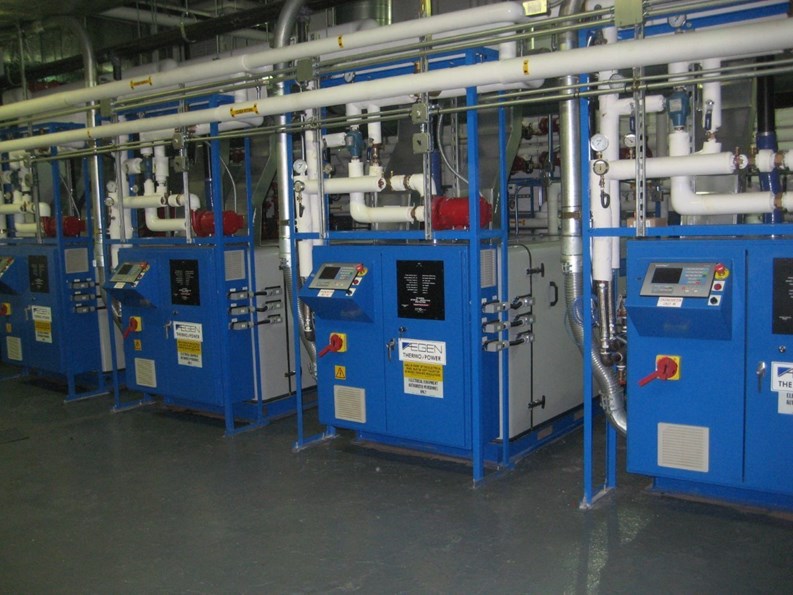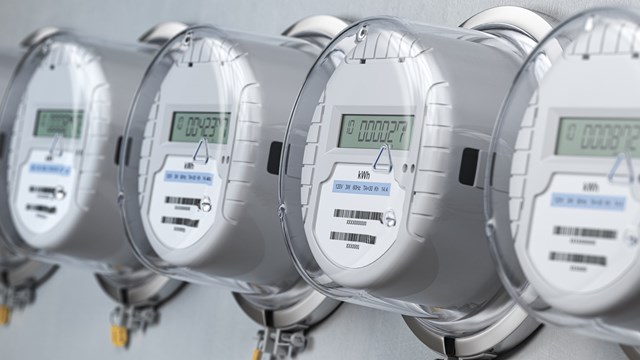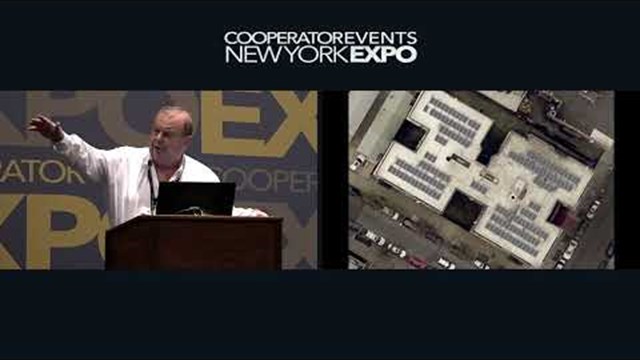With today’s condo and HOA residents much more conscious of their impact on the environment and looking for ways to reduce it, smart boards and property managers are looking to help. Simple tasks like turning down thermostats, shutting off air conditioners during the day, and shutting lights when not in use all help, but there’s more that can be done. More and more buildings and associations are deciding to invest in greener equipment and devices that use less energy and leave a smaller environmental footprint.
New York City Mayor Michael R. Bloomberg got the ball rolling in 2009, when he launched New York City’s Greener, Greater Buildings Plan (GGBP). The mayor’s push for green has in turn pushed the real estate market into a more environmentally-friendly direction.
“There are a number of different requirements that New York City is instituting to help buildings, including various local laws, such as Local Law 84 and Local Law 87, to monitor and benchmark their energy use against a baseline measurement,” Peter B. Zlotnick, a partner at the law firm of Kagan Lubic Lepper Finkelstein & Gold, LLP, who specializes in green building and renewal energy, says.
“That helps to improve how the electricity, the water usage and gas usage is done in buildings. In the long term, it will help enhance the value of the properties as well, because if you can operate a building at less cost, then there will be more capital available for the unit owners to put towards other types of amenities, such as enhancing the interior space of the buildings or adding other luxury items such as concierge services and the like. But it’s really a use of resources and cost savings.”
It is important to talk about all the benefits associated with installing energy efficient measures beyond the obvious energy and money savings. Often times, high efficiency equipment requires less maintenance, runs quieter, and improves overall comfort. These are quality of life improvements.
There’s also a large variety of Energy Star rated appliances and equipment out there and often they’re not more expensive or not much more expensive than any others. When considering if an appliance or piece of equipment is worthwhile for a multifamily building or association to invest in, each board’s building or HOA will have different criteria for their purchases and upgrades.
Money-Saving Components
A common perception is that replacing old windows with new energy-efficient windows can save a lot of energy, and this is not always the case. Replacing windows can save energy, but is typically less cost effective than tune ups and retrofits to heating and cooling equipment or to the air leakage of the building.
Recent innovations in boiler controls for multifamily units have shown promise to reduce boiler cycling and thus save energy because they modify how the boiler works. These controls, according to the experts, have fairly quick paybacks.
Speaking of boilers, Victor Nazario, the resident manager and superintendent of The Whitney in Murray Hill, says there are ways to control energy loss—measures he learned while taking instructional classes through the 1,000 Green Superintendents program.
The 1,000 Green Superintendents program, which is part of SEIU Local 32BJ’s Thomas Shortman training fund, is a collaborative effort between superintendents, property managers, union staff and 32BJ members that strives to increase the eco-friendly factor of New York City multifamily buildings by increasing the knowledge of green initiatives. The 40-hour course, which when completed, awards supers with green building certifications from the Building Performance Institute, covers multiple subjects in green building initiatives, including water conservation, utilities and energy benchmarking and sustainability/indoor environment quality.
"One thing we learned is how to most effectively work our boilers. There are so many ways boilers lose energy. They taught us step-by-step the technology and the history of how boilers work, operate, how you can maximize them, how they have energy losses in at least 4 different stages. This to me became exciting. No longer was it a dull, boring thing. Now, here I am repairing things knowing I'm lessening the energy footprint of the building," Nazario says.
Co-Generation
To tackle the increasing power needs of large residential buildings and to provide energy for such buildings during power outages, some buildings and large developments have started "co-generation" and/or "demand response" programs.
Co-generation programs enable a building or group of buildings to generate some of their own power and then use it themselves to save money. It also allows them to stabilize their power supply during times of heavy usage, such as during very hot weather or very cold weather. Demand response is a similarly economical concept, which basically increases or decreases utility output based on demand. The most difficult part of implementing a demand response system or co-generation program might be figuring out what type of program works for your specific building.
Cogeneration requires a CHP (combined heat and power) system to utilize the recoverable thermal energy generated during the running of the engine-generator. “The cost of the fuel and maintenance required to run the engine closely matches the cost saved by not purchasing that quantity of electricity from the utility,” says Stephen Stone, president of the Long Island-based DSM Engineering Associates, PC. “The fuel saved by not running a boiler, electrical heater or purchased steam to obtain the heat generated by the CHP is the driving force for the CHP economics.”
“Interest in CHP really took off in 2008 when Mayor Bloomberg unveiled his PlaNYC sustainability vision, which aims to reduce the city’s carbon emissions 30 percent by 2030,” says Dale Desmarais, sales manager at Aegis Energy Services, which engineers, manufactures and installs modular, natural gas-fueled CHP systems. “CHP systems reduce reliance on other utilities, reduce energy costs and reduce the carbon footprint. CHP saves on energy costs and emissions because one fuel source, in this case, natural gas, produces two sources of energy: heat and electricity.”
“Now, he says, “there is considerable increased interest in CHP since thousands of buildings are being required to switch out of No. 6 heating oil into either No. 2 or natural gas. Many are opting to go directly to natural gas and install energy saving CHP systems simultaneously. Aegis’ CHP systems operate with natural gas, which currently costs about 30 percent less than fuel oil.”
Buildings such as the Schwab House, The Hamilton, and Hampton House are some of Aegis’ clients. In 2009, Schwab House, a 646-unit cooperative on the Upper West Side, partnered with NYSERDA and entered a shared savings program with Aegis, a Massachusetts-based developer of modular cogeneration systems, to install the largest co-gen system in the city. The $1.6 million CHP system installation was made possible with a $402,000 grant award from NYSERDA. The CHP system runs parallel to the Con Ed grid and the recovered waste heat is used to provide space heating and domestic hot water for the building, as well as drive an absorption chiller system that is producing more than 20 tons of cooling for the lobby, hallway and common areas.
Demand Response
Demand control ventilation (DCV) is also an option for large buildings. If you have air conditioning on all the time, you must ventilate the space with a certain amount of fresh air. A DCV system monitors the carbon dioxide level in a space and lets you slow down the flow of fresh air within safe levels. Chillers with variable speed drives are also available or existing chillers can be retrofitted with variable speed drives. You can reduce the speed ranges for fans and pumps by 25 to 30 percent when an area is not in use. When you have an event or an area is in use, you can run the system at its full speed.
The way the demand response program works is that power supply is reduced in the building in common areas, like the lobby, for instance, and when the building cuts back on its electric use, that usage is put back onto the overall power grid to help prevent blackouts citywide. The Sovereign, a 47-story, 360-unit co-op on East 58th Street, according to Douglas Elliman property manager Jay Fingerman, has been participating in a demand response program since 2007.
Co-generation and demand response programs use different means to attain the same end of putting less of a strain on the electricity grid. Simply put, co-generation is when a building takes advantage of the energy thrown off by a heating plant to generate more power, according to U.S. Energy Group, based in Fresh Meadows, N.Y. It is estimated that a building energy management system can reduce fuel usage by 15% to 30% with payback in as little as two years.
A Bright Idea
One of the easiest and most common places boards look to save money on energy costs is lighting. The newest generation of solid-state lighting lasts up to 25 times longer than a standard incandescent bulb and saves up to 80 percent in comparison. Replacing common area lighting with LED bulbs can prove to be cost effective over the long run by reducing both operating and maintenance costs.
Nazario spoke of the differences between incandescent and fluorescent bulbs. “When they taught us about light bulbs,” he says about the 1,000 Green Supers program, “they started sharing with us about how incandescent bulbs—which for me, I've always enjoyed incandescent bulbs because I love the lighting it gives me. It gives you the best type of lighting so you can identify colors, paint. Fluorescent bulbs don't give you the same ability to see colors. The rendition of colors is not as good. So I didn't prefer fluorescent bulbs.
“But when they taught us in the course that these manufacturers have been upgrading the mini- twist bulbs, even though they're fluorescent, they are starting to get better color rendition. In our building we have 29 stories, and on each floor we have four bulbs. We were using 75-watt bulbs. The mini-twist, at a 15-watt output, gives us the same lighting of a 75-watt incandescent. When you multiply that by four bulbs times 29 floors, that's thousands of dollars we're saving the building,” Nazario says.
“Another thing about these fluorescents is now they're lasting a lot longer. Whereas before they were burning out a lot quicker, now they're starting to upgrade the technology to allow these mini-twist fluorescent bulbs to last a lot longer. There are some light switches that are automatic. We swapped out manual switches with automatic switches.”
He also recommends adding time or motion controls to lighting that will regulate when lights go on and off and ensure that they aren’t in use when they aren’t needed.
Benchmarking and Energy Audits
Deciding on the “right” piece of new equipment to install—one that will reduce energy and maintenance costs, have the highest return-on-investment, all while maintaining or increasing comfort and safety—can be a daunting task best left to a professional.
Because of this, one of the most consistently sound investments owners can make in their property is a benchmarking study and an energy audit.
New York City was on the cutting edge when it passed Local Law 84, requiring yearly benchmarking analysis of energy and water usage in buildings 50,000 square feet and larger, and Local Law 87, which calls for American Society of Heating, Refrigerating and Air Conditioning Engineers (ASHRAE) Level II energy audits, as well as retro-commissioning of base building systems.
Something as simple as a high-tech coffee-maker that’s on 24/7 for residents of a building could be using lots of energy that’s not necessary. A recent report said that a simple iPhone uses more energy in a single day than the average refrigerator. An auditor will discover things like that.
Sometimes covenants and bylaws prohibit what kind of energy improvements and efficiencies can be made. For example, take something like solar panels or wind turbines.
Money Matters
Typically, more-efficient technologies tend to have a higher upfront cost and reduced operations cost for the lifetime of the technology. This is not always the case, however.
For more information on programs available to improve your multifamily co-op or condo visit: www.dsireusa.org. This is a state-by-state database of incentives for renewables and energy efficiency programs. You can also go to utility providers like Con Ed at www.coned.com/energyefficiency/ at its Green Team website and also go to www.nyserda.ny.gov for information on the Multifamily Performance Program that is available for multifamily buildings of five or more units. This program provides property owners, builders, co-op and condo governing boards with the expertise, technology and incentives to permanently improve their building’s energy performance through proven technologies. For government incentives, visit www.Energystar.gov. Boards and HOAs should also consult their own tax attorneys for possible savings.
Keith Loria is a freelance writer and a frequent contributor to The Cooperator. Editorial Assistant Enjolie Esteve contributed to this article.










Comments
Leave a Comment